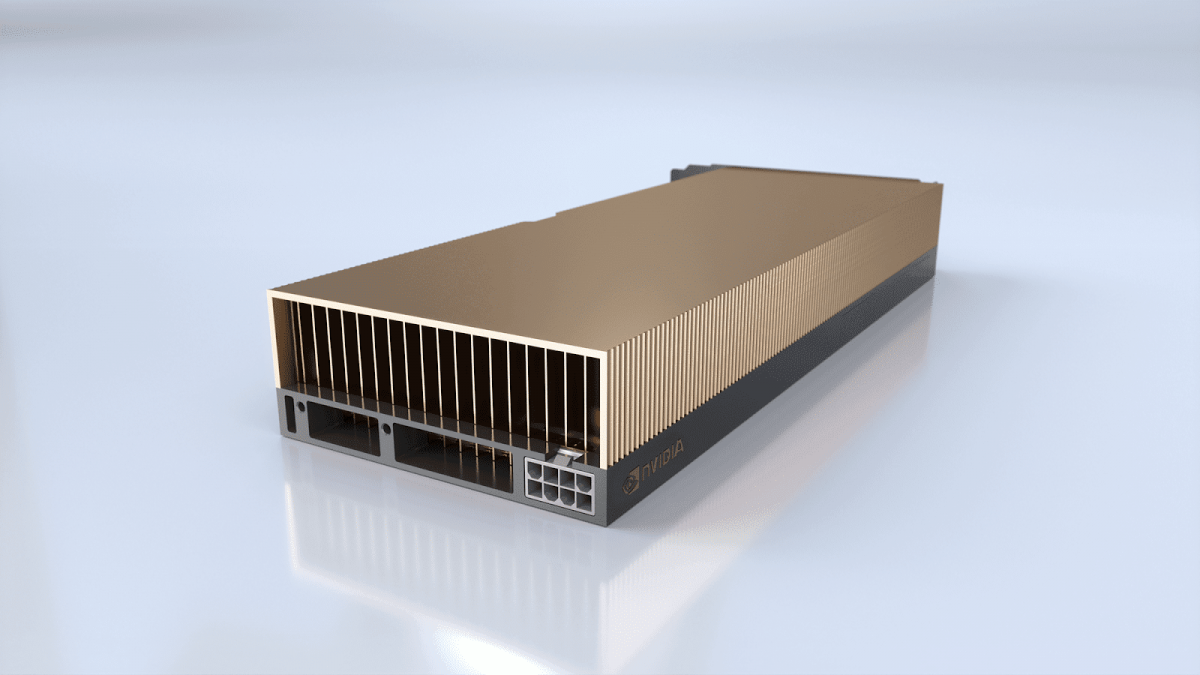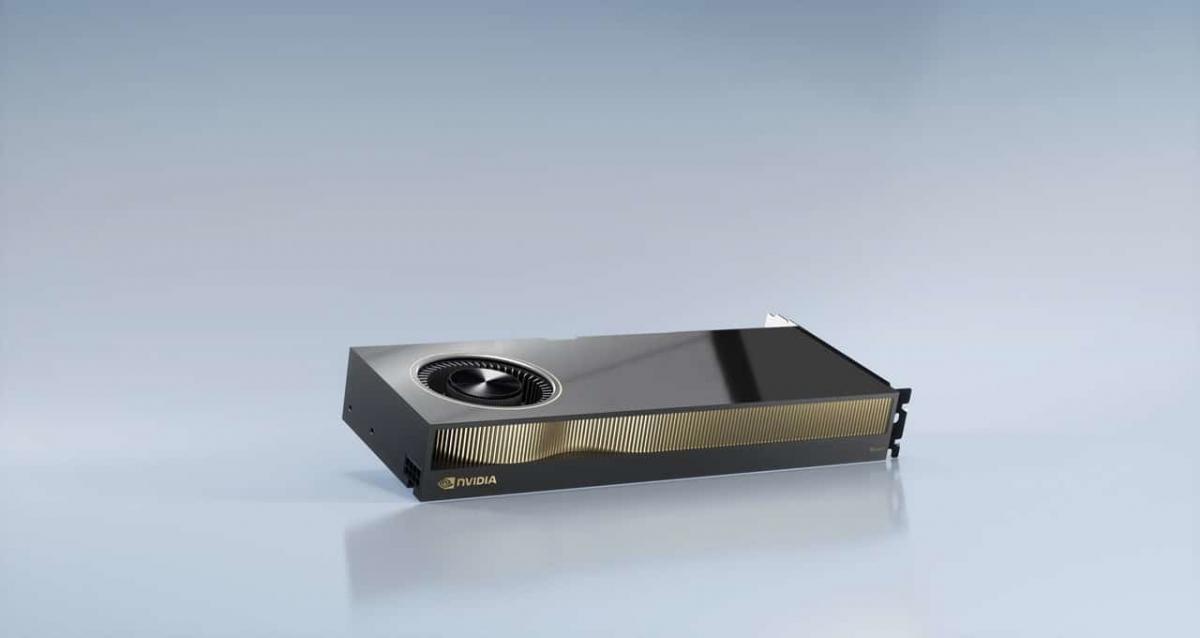NVIDAi just launched the RTX A6000, based on Ampere and a Professional Graphics Card series which holds 48GB of GPU memory. Double-speed processing for single-precision floating point (FP32) operations and improved power efficiency provide significant performance improvements.
With this release, NVIDIA is saying goodby to the Quadro brand it seems. The card is based on an 8 nm "GA102" GPU, the same as the GeForce RTX 3080 holds, but configured differently with for example that enormous 48 GB of GDDR6 memory along with ECC support. The new cards for workstations and servers have the GPU fully enabled, which is good for 10,752 Cuda cores. The GPUs for gamers have a partially disabled GPU, with 10,496 and 8704 cores for the RTX 3090 and 3080 respectively.
Second-Generation RT Cores
With up to 2X the throughput over the previous generation and the ability to concurrently run ray tracing with either shading or denoising capabilities, second-generation RT Cores deliver massive speedups for workloads like photorealistic rendering of movie content, architectural design evaluations, and virtual prototyping of product designs. This technology also speeds up the rendering of ray-traced motion blur for faster results with greater visual accuracy.
Third-Generation Tensor Cores
New Tensor Float 32 (TF32) precision provides up to 5X the training throughput over the previous generation to accelerate AI and data science model training without requiring any code changes. Hardware support for structural sparsity doubles the throughput for inferencing. Tensor Cores also bring AI to graphics with capabilities like DLSS, AI denoising, and enhanced editing for select applications.
48 Gigabytes (GB) of GPU Memory
Ultra-fast GDDR6 memory, scalable up to 96 GB with NVLink, gives data scientists, engineers, and creative professionals the large memory necessary to work with massive datasets and workloads like data science and simulation.
Virtualization-Ready
Support for NVIDIA virtual GPU (vGPU) software allows a personal workstation to be repurposed into multiple high-performance virtual workstation instances enabling remote users, to share resources to drive high-end design, AI, and compute workloads.*
PCI Express Gen 4
Support for PCI Express Gen 4 provides double the bandwidth of PCIe Gen 3, improving data-transfer speeds from CPU memory for data-intensive tasks like AI and data science.
Power Efficiency
Featuring a dual-slot, power efficient design, the RTX A6000 is up to 2X more power efficient than Turing GPUs and crafted to fit into a wide range of workstations from worldwide OEM vendors.
| Nvidia video cards for workstations and data centers | ||||||
| RTX A6000 | A40 | RTX 8000 | GV100 | |||
| Cuda cores | 10752 | 10752 | 4608 | 5120 | ||
| Tensor scores | 336 | 336 | 576 | 640 | ||
| Boostclock | ? | ? | 1770MHz | ~ 1450MHz | ||
| Memory speed | 16Gbps GDDR6 | 14.5Gbps GDDR6 | 14Gbps GDDR6 | 1.7Gbps HBM2 | ||
| Memory bus | 384-bit | 384-bit | 384-bit | 4096-bit | ||
| Vram | 48GB | 48GB | 48GB | 32GB | ||
| Ecc | Partly (dram) | Partly (dram) | Partly (dram) | Fully | ||
| Half Precision | ? | ? | 32.6 TFLOPS | 29.6 TFLOPS | ||
| Single Precision | ? | ? | 16.3 TFLOPS | 14.8 TFLOPS | ||
| Tensor Performance | ? | ? | 130.5 TFLOPS | 118.5 TFLOPs(FP16) | ||
| TDP | 300W | 300W | 295W | 250W | ||
| Cooling | Active | Passive | Active | Active | ||
| NVLink | 1x NVLink3112.5GB / sec | 1x NVLink3112.5GB / sec | 1x NVLInk250GB / sec | 2x NVLInk2100GB / sec | ||
| GPU | GA102 | GA102 | TU102 | GV100 | ||
| Architecture | Ampere | Ampere | Turing | Volta | ||
| Manufacturing Process | Samsung 8nm | Samsung 8nm | TSMC 12nm FFN | TSMC 12nm FFN | ||
| Launch Price | ? | ? | $ 10,000 | $ 9,000 | ||
| Launch Date | 12/2020 | Q1 2021 | Q4 2018 | March 2018 | ||
Table AnandTech.




